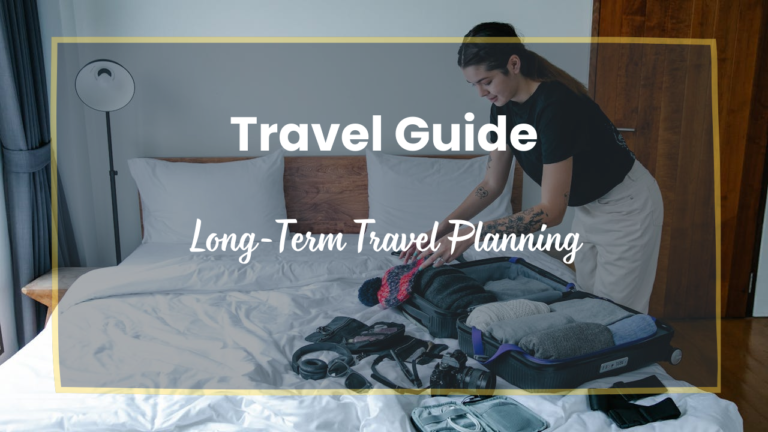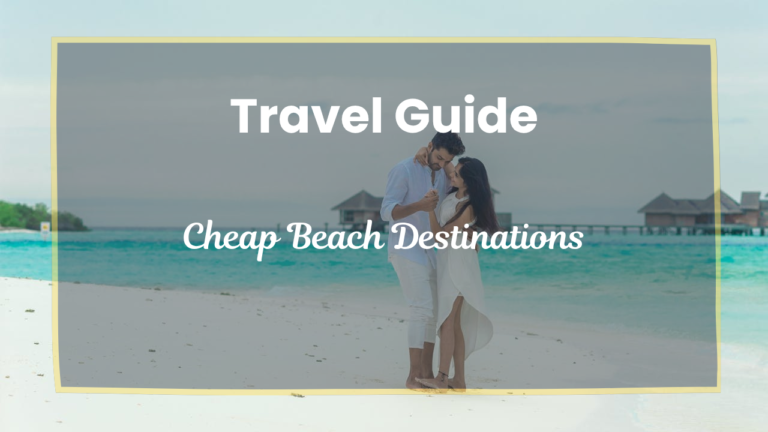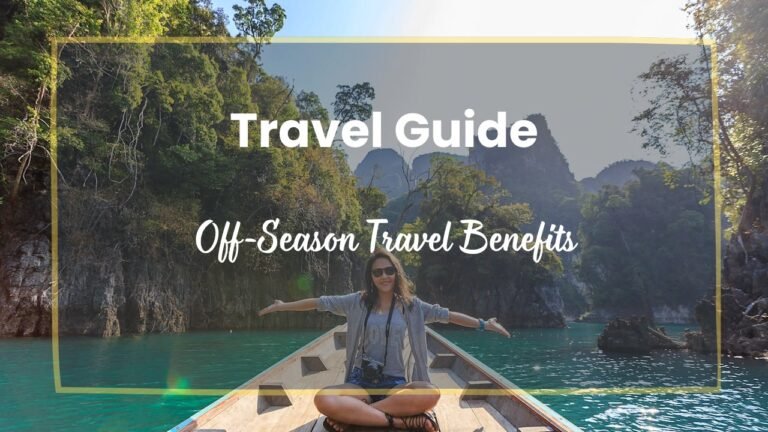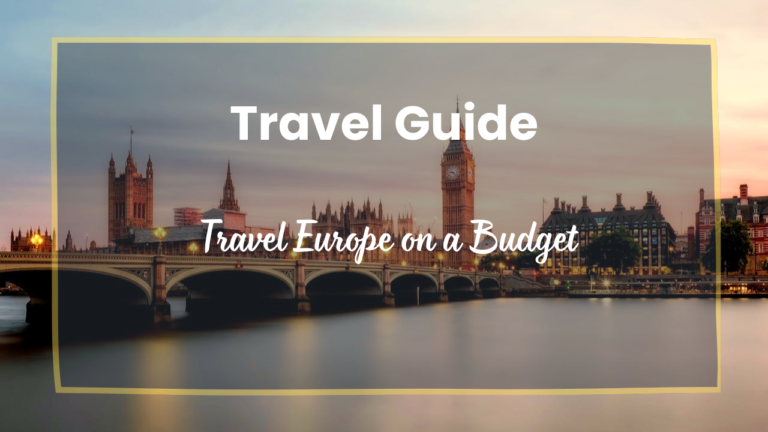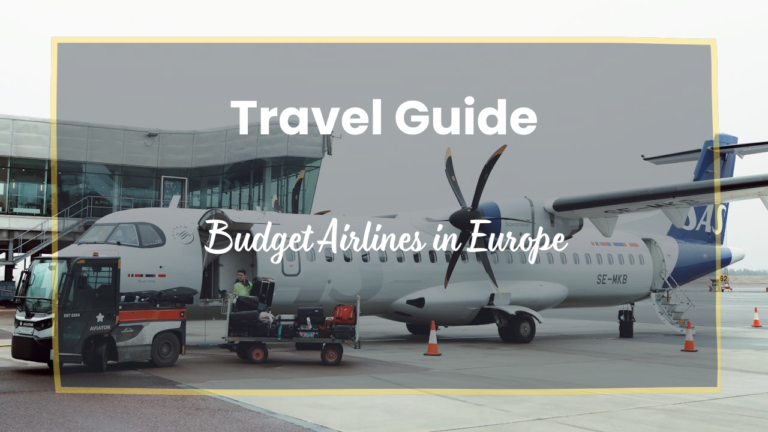Luxury Travel Tips – The Insider’s Guide to Extraordinary Journeys
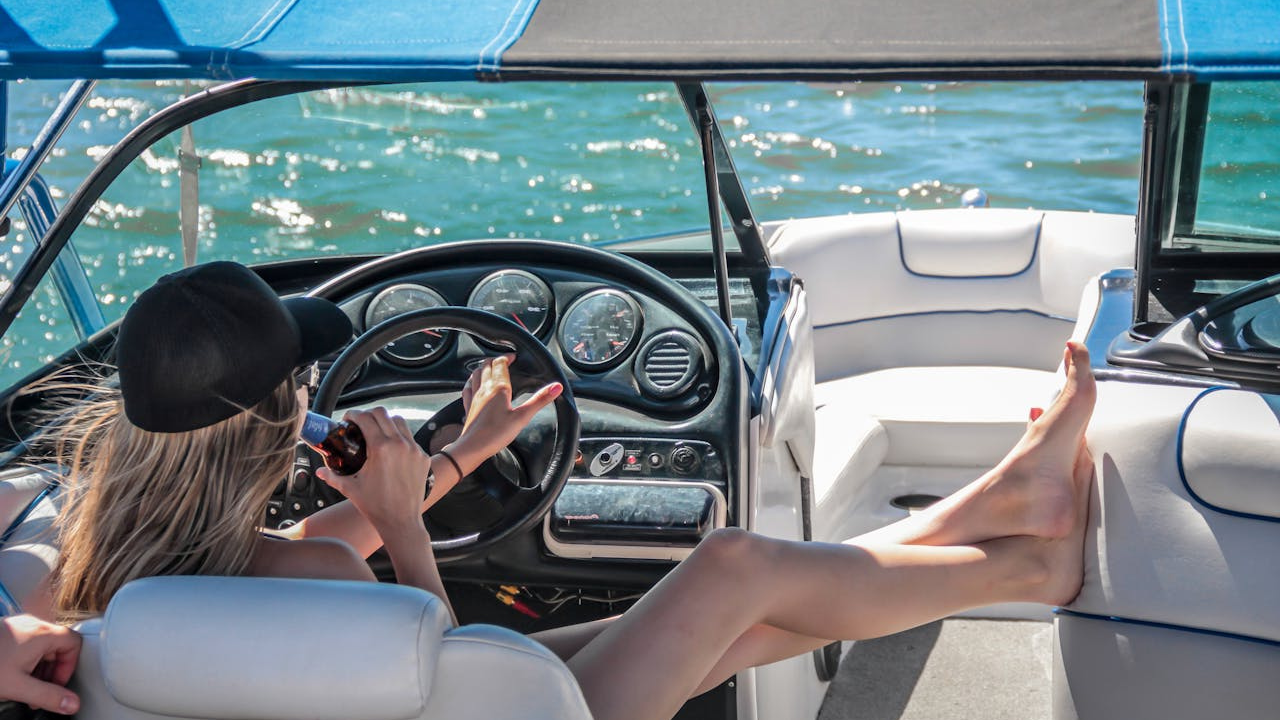
After planning more than 2,000 luxury travels on six continents, I learned that the differences between a good experience and a truly transformational one lie in the small details that most travelers overlook.
Luxury travel is defined by moments like when a couple returns from their honeymoon to Bhutan and tells me about a private blessing ceremony that was arranged for them by a local monk. Or, when a group shares their experience of how their “impossible”, but now unforgettable request of a private viewing of Monet’s Water Lilies in Paris became their highlight.
The goal is not to spend the most money. I’ve seen some travelers spend $20,000 to have a normal week, while others invest half of that amount into experiences that change their lives forever. What is the secret?
I’m going to share some of the luxury travel tips, strategies and connections that I normally reserve for private clients. If you are planning your first luxury getaway or are a seasoned adventurer looking to elevate your travels, these tips will help.
What Defines True Luxury Travel?
Luxury travel has evolved past marble lobbies, thread counts and other superficial features. The sophisticated traveler of today seeks authentic experiences with impeccable service.
Private wine tastings are offered in family-owned Burgundy vaults, helicopter access is granted to remote Icelandic glaciers, or a third-generation Italian nonna teaches you how to make fresh pasta in her Tuscan home.
Modern Luxury Framework
- Personalization over standardization
- Exclusive access to public attractions
- Making meaningful connections to local culture
- Comfortable practices that are sustainable
- Expert planning allows for optimal time management
Essential Pre-Trip Planning: Foundation of Luxury Travel

How Do I Choose the Perfect Luxury Destination?
Consider: Beyond Pinterest-perfect photos, research destinations during “shoulder seasons”, when you will find better service ratios and more authentic experiences. Consider:
- Climate patterns: Visit the Maldives between November and April (dry season).
- Cultural calendars: Plan your visits around the harvest seasons of wine regions
- Service quality: Destinations that are culturally embedded in luxury hospitality (Japan, Switzerland, Singapore).
Last October, I organized an experience in the Scottish Highlands for a married couple. It was during the “golden quiet”, which is early October, when crowds have gone, but the weather still remains crisp and clean.
It was almost like they had Eilean Donan all to themselves. And the staff at the hotel had plenty of time to set up impromptu whiskey tastings, something that would have been impossible during peak season. It’s sometimes the best luxury to have a special place all to yourselves.
What’s a Realistic Luxury Travel Budget?
Budget Per Person Daily:
- Ultra-luxury: $2,000-5,000+ (private jets, exclusive resorts)
- High-end luxury: ranges from $800 to $2,000.
- Accessible luxury: $400-800 (boutique properties, premium experiences)
Reality Check: I tell all my clients that the key to luxury budgeting is not spending more but rather spending strategically. Booking a $400/night boutique in Rome’s Trastevere and spending the savings on a private cookery class with a Roman Family will give a much more luxurious experience to a guest than paying $1,200/night near the Colosseum for a generic 5-star.
What matters to you most is what’s important. Are you looking to save money by splurging on accommodation and meals? You may prefer to have a comfortable home base, while still investing in life-changing experiences.
Essential Booking Timeline
- Twelve months ahead: Ultra-exclusive properties, including Amanzoe and Le Lagon by Jean Georges.
- Six to nine months before: Luxury hotels in peak season, villa rentals.
- Three to six months before: Reservations for Michelin-starred dining establishments.
- One month before: Special experiences, such as private tours, spa treatments or special experiences.
Luxury Accommodations: Beyond Five Stars

How Do I Identify Truly Exceptional Hotels?
I’ve found that after reviewing thousands of hotels around the globe, I can recognize exceptional service in just a few minutes. What I look for and what you need to do too.
Red Flags That Signal Mediocre Service:
- Front desk staff reading off scripts rather than having genuine conversations
- Generic welcome amenities
- Reviews of hotels that use the same words on different platforms
- Staff who can’t give specific recommendations for local tourist sites beyond the obvious ones
Excellence Indicators I Always Notice:
- Staff can remember your preferences based on previous stays or pre-arrival discussions
- Service proactively: Adjust the temperature before you complain that it is too warm
- Local expertise: Concierge suggests neighborhood bakeries, not just Michelin-starred restaurants
- Flexible policies: A willingness to accommodate reasonable special requests with no hesitation
Private Villas vs. Luxury Hotels: Making the Right Choice
Choose Private Villas When:
- Travelling with 6+ people
- Seeking complete privacy
- Planning Extended Stays (7+ Nights)
- What is authentic local immersion?
Client Success: My most memorable arrangement was for a Moroccan family celebrating their grandmother’s 80th birthday. Instead of booking a resort in Fez, where the family has lived for seven generations, I booked them into a traditional medina riad.
Owners didn’t only provide accommodations, they also shared family recipes and arranged for private access to the ancestral library. They even connected my clients with artisans that their family had worked alongside for decades. It is impossible to recreate such a cultural experience in a large international hotel chain.
Choose Luxury Hotels When:
- Travelling alone or in a couple
- Wanting diverse dining options
- Having an extensive concierge service
- Social interaction with other travelers
Boutique Properties: The Sweet Spot
What Makes a Boutique Hotel Exceptional?
- A maximum of 50-80 bedrooms for personalized service
- Property owned or operated by a small owner-operated luxury collection
- Unique design reflecting local culture/history
- Exclusive partnerships with local artisans, guides and other professionals
Outstanding Examples:
- Fogo Island Inn: Arctic luxury and artist residency programs
- Maasai Mara: Safari luxury with a conservation emphasis
- Hoshinoya Tokyo: Ryokan experience in an urban setting
Exclusive Experiences: Access the Inaccessible

How Do I Access Private Tours and Exclusive Experiences?
Insider Access Secrets I’ve Learned:
Understanding how culture works in different areas is key to building relationships with destination experts. In Japan, introductions are more important than payments. When it comes to Italy, the family relationship opens doors that credit card payments cannot. In Scotland, the shared appreciation of craftsmanship creates long-lasting partnerships.
Here’s my method for building a network of cultural insiders around the world:
Museum Curators: I maintain relationships and can arrange for viewings to take place after hours. If you’re alone at twilight with Monet’s Water Lilies in Paris’ Musee de l’Orangerie, then it becomes magical.
Master Craftsmen: The true craftspeople, such as the Kyoto potter whose family has created tea ceremony pieces for over 400 years or Murano’s glassblower who learned Venetian techniques from his grandfather, rarely advertise. To find them, you need to have local connections and cultural understanding.
Conservation Partners: The best wildlife experiences are gained through genuine conservation programs. The best wildlife experiences are those that support conservation programs, whether it’s swimming with whale sharks in the Philippines, tracking rhinos with anti-poaching units in Kenya or partnering with marine research in the Philippines.
Cultural Immersion Without Compromise
Authentic Luxury Experiences:
- Private cooking lessons in the comfort of your own home, rather than in commercial kitchens
- Master craftsmen’s workshops (pottery in Kyoto or glassblowing in Murano).
- Costa Rica offers a variety of conservation experiences, including sea turtle monitoring.
- Harvest tourism in wine regions.
Tip: Instead of crowded Louvre tours, arrange for private viewings of smaller museums, such as the Musée Jacquemart-André. Or access Montmartre artist studios through cultural concierges.
Smart Luxury Packing: Quality Over Quantity
What Should Every Luxury Traveler Bring?
Essential Luxury Items:
- Portable steamer (smooth elegance everywhere)
- Tags with RFID blockage for luggage are available in high quality.
- Universal adapter USB-C port
- Silk travel pillow with eye mask
- Compact portable charger (20,000mAh minimum)
Wardrobe Strategy for Luxury Travel
The 5-4-3-2-1 Formula:
- 5 versatile bottoms (a mixture of pants, skirts, or shorts).
- 4 statement tops to mix and match
- 3 layers (cardigan, blazer, light jacket)
- Buy two pairs of shoes for each occasion (walking, evening/dining).
- Special occasions call for a standout piece.
Fabric Focus: Merino, silk blends and technical fabrics with wrinkle- and odor-resistant properties, while maintaining a luxury appearance.
Sustainable Luxury: Conscious Indulgence

How Can I Travel Luxuriously While Being Environmentally Responsible?
Sustainable Luxury Criteria:
- Carbon offset programs from verified providers such as Gold Standard
- Hotels that have real green certifications, not just marketing claims
- Local food, staff, and amenities are sourced locally
- Partnerships for wildlife conservation rather than exploitation
Eco-Luxury Hotel Examples
Leading Sustainable Luxury Properties:
- Six Senses (global) properties: Sustainability integrated into luxury
- LEED-certified hotel with organic amenities in multiple locations
- Clayoquot Wilderness Resort, British Columbia: Luxury tent camp with minimal impact on the environment
Transportation: Moving in Style
When Should I Choose Private Transfers?
Always Book Private When:
- Arriving with shopping or luxury luggage
- Luxury properties in remote locations
- Exclusive experiences require strict schedules.
- Prioritizing safety and health protocols
Luxury Train Travel: The Renaissance
Premium Rail Experiences Worth Booking:
- Orient Express routes in Europe
- Royal Scotsman through the Scottish Highlands
- Rovos Rail in Southern Africa
- Maharajas’ Express Through India
Why choose trains? Scenic luxury and social dining, sustainable transport, with a reduced carbon footprint when compared to flying.
Technology for Luxury Travelers
Essential Apps and Services
Must-Have Applications:
- Priority Pass: airport lounge access around the world
- Resy/OpenTable Premium Restaurant Reservations
- Blacklane: A reliable luxury car service worldwide
- TripCase: Comprehensive itinerary management
- XE Currency: Live exchange rates for luxury purchases
Digital Concierge Services
Premium Concierge Apps:
- Quintessentially: Global Luxury Lifestyle Management
- John Paul: 24/7 premium concierge service
- Velocity Black: High-end travel card and lifestyle card with concierge
Frequently Asked Questions
What Are the 5 C’s of Modern Luxury Travel?
Luxury travel is defined by the 5 Cs:
- Customization: Personalized experiences that match personal preferences
- Immersion in culture: authentic local immersion with expert guidance
- Enjoy renowned chefs’ cuisine and other unique dining experiences
- Conservation: Sustainable practices protecting destinations
- Community: meaningful connections with locals, fellow travelers
How Much Should I Budget for a Luxury Trip?
Daily luxury budgets vary by destination:
- Southeast Asia: $300 to $800 per person
- Europe: $600-1,500 per person
- Africa (Safari): $800-2,500 per person
- Private Island Resorts: $1500 to $5,000 per person
Budget allocation strategy: 40% accommodation, 25% experiences, 20% dining, 15% transportation.
What’s the Difference Between Expensive and Luxurious?
Luxurious priorities: cost, status symbols. Priorities for luxury include:
- Service that anticipates your needs
- Exclusive access to experiences not available to the general public
- Expert planning and logistics for time optimization
- Local expertise facilitates authentic cultural connections
- Sustainable practices ensuring destinations remain pristine
How Do I Find Authentic Luxury Experiences?
Strategy for authentic discovery:
- Local specialists are better than international chains
- Travel forums and specialist publications can be used to research beyond the first page of Google results.
- Contact the hotel concierges with your specific needs and interests weeks in advance.
- Use social media networks to reach out to previous luxury travelers
- Consider shoulder seasons, when locals are more available for personal interaction
Regional Luxury Travel Insights
Europe: Classic Luxury Reimagined
Recent trends include: exclusive access to the Vatican collection, private chateau rentals in France and tours of the illuminated Prague Castle at midnight.
Travel during the best seasons for luxury: The late spring (May), and early autumn (September) to enjoy the best weather conditions and cultural alignment.
Asia-Pacific: Service Excellence Standard
Standout experiences include private onsen experiences with masters in Japan, exclusive Tea Ceremonies with Masters, and helicopter transfers to remote Temples in Bhutan.
Culture: Consider local customs when tipping or giving gifts to show appreciation for superior service.
Americas: Adventure Meets Luxury
Exclusive archaeological site access in Peru. Luxury ranch stays in Patagonia.
Sustainable focus: Consider properties that are supportive of local conservation efforts as well as indigenous community partnerships.
Remember that true luxury is not about the price, but the memories and personal transformations created by extraordinary experiences shared with exceptional individuals


